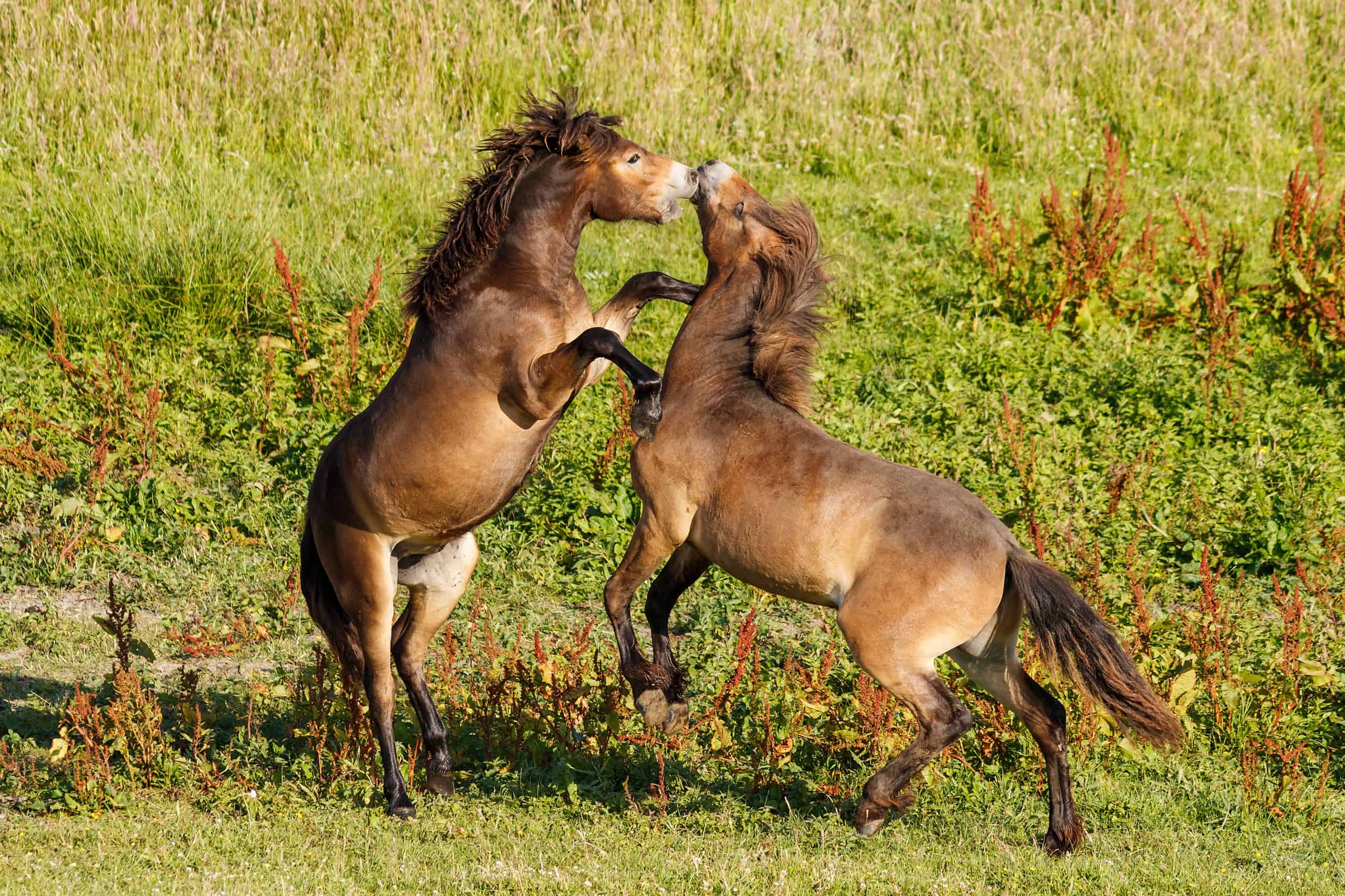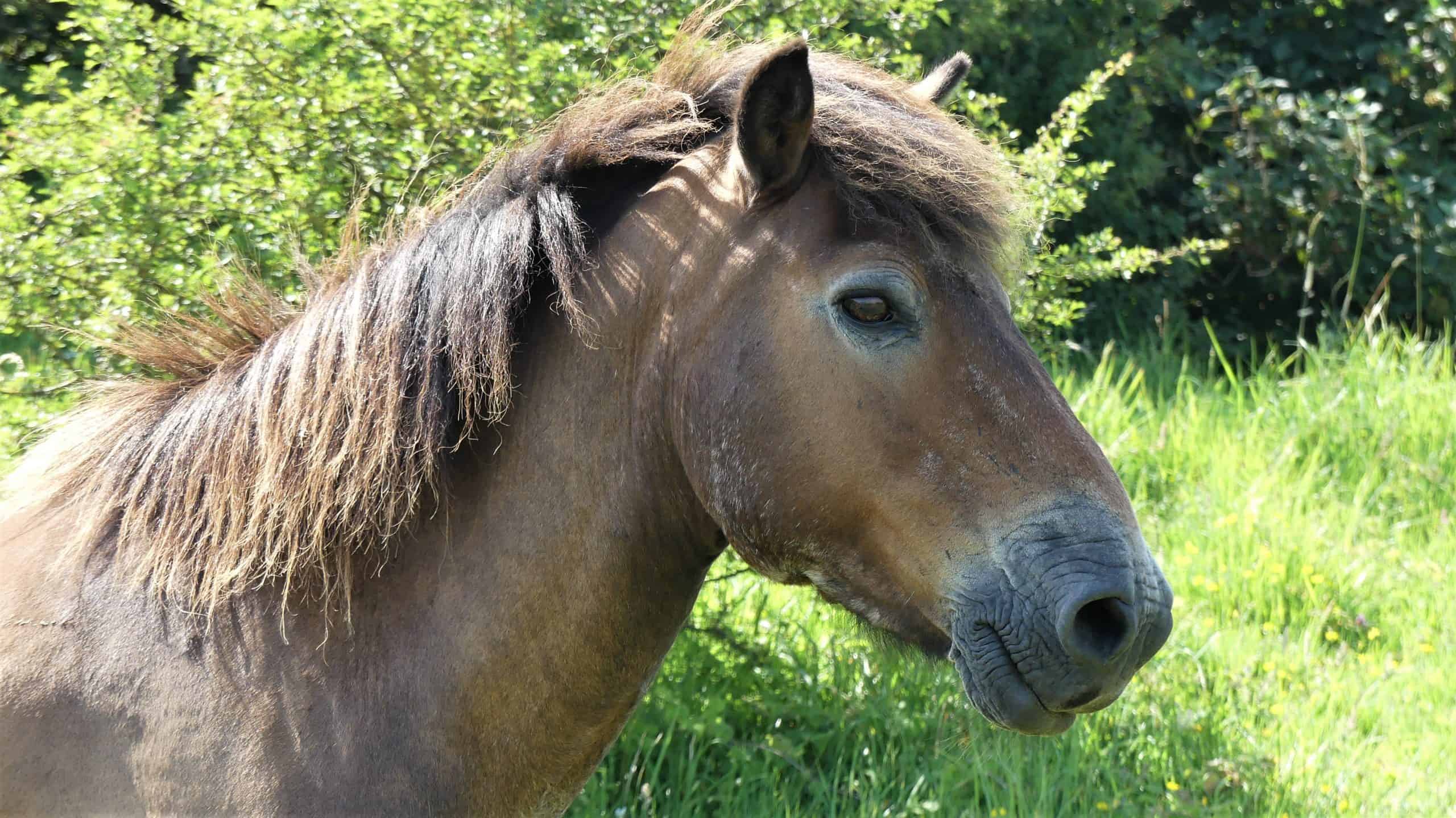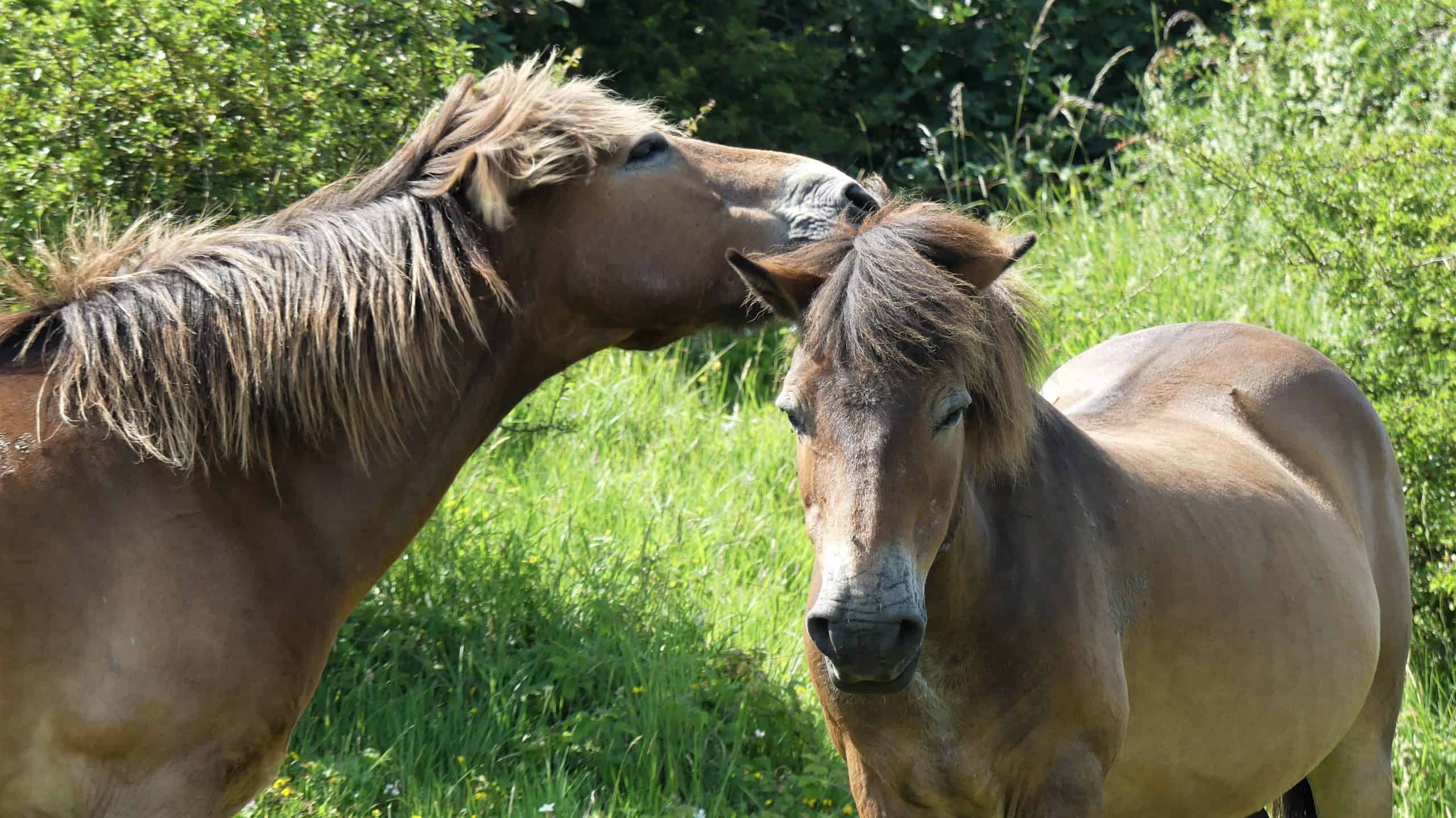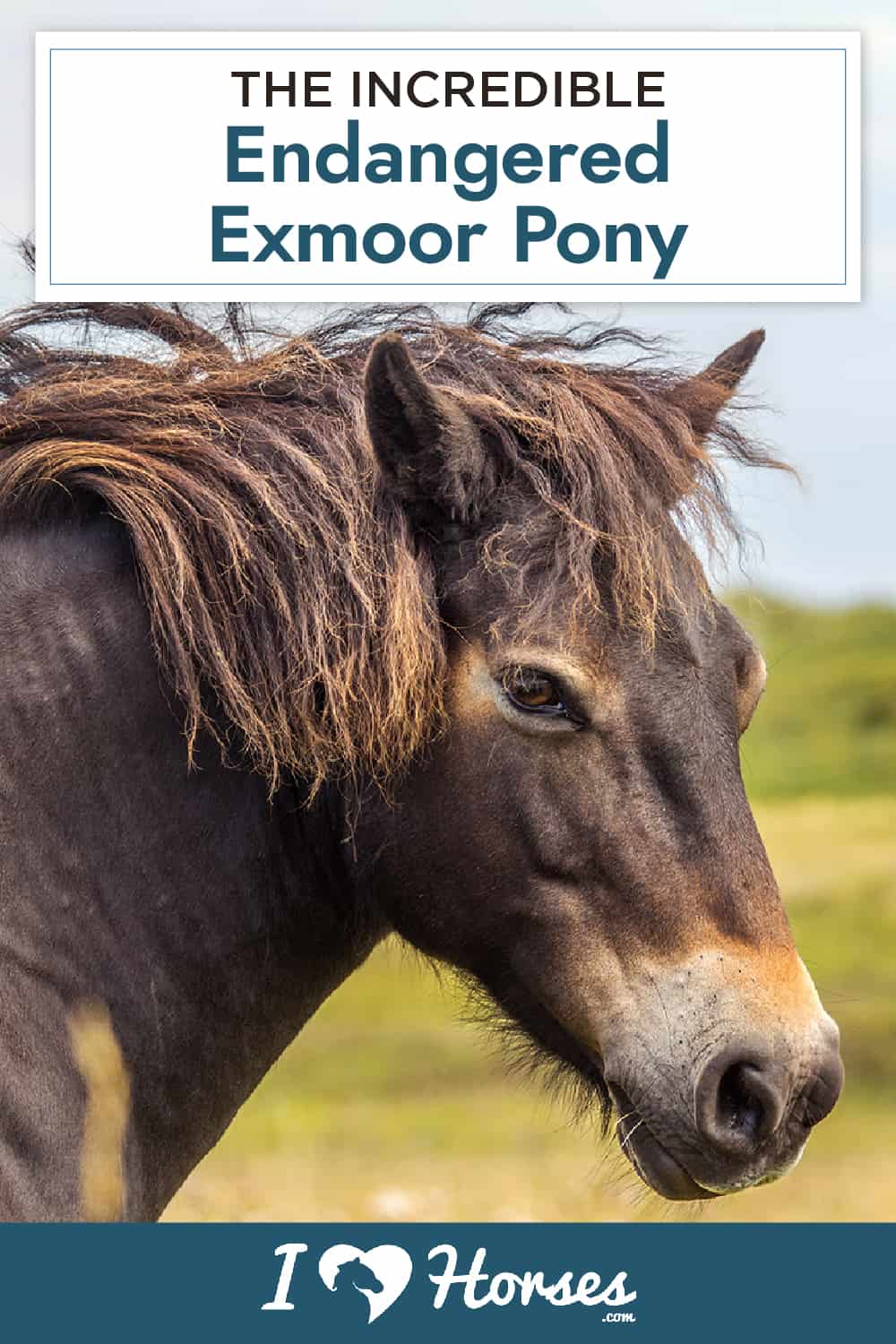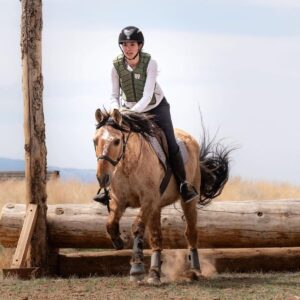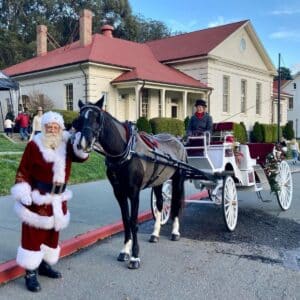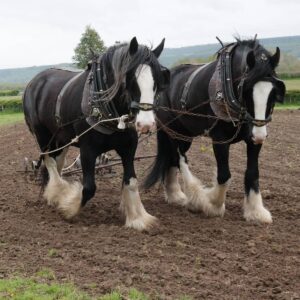The hills of Exmoor in Southwest England are home to wet winters, harsh winds, and a distinctive breed of pony that has roamed the moorland for millennia. The Exmoor Pony lived in wild herds on the moor, thriving in the remote area until modern wars of men threatened the survival of the breed. Read on to learn the story of these remarkable little brown ponies and the quest to preserve their history.
An Ancient Pedigree
Horses have inhabited the British Isles since 700,000 BC. Fossil remains trace the existence of horses on Exmoor to 50,000 BC. The ancestors of the modern Exmoor Pony existed in relative isolation on the moor, maintaining the breed's genetic integrity. Even today, these ponies still possess a close morphological resemblance to the primitive horse.
A Primitive Appearance Suited for a Harsh Environment
Ancient Roman carvings illustrated wild horses similar to the Exmoor Pony found in the moorland today. The Exmoor Pony is small but hardy, with a height of only 11.1 to 12.3 Hands. The breed's short legs, stocky build, and strong jaw suit the rugged terrain and coarse vegetation of its habitat.
Their dark bay or brown coats consist of a dense undercoat to insulate them from freezing winter temperatures. There is also a long, oily, outer layer to protect them from chilling ice and snow. The fleshiness of their eyelids gives further protection from the cold. Additionally, the docks of their tails include long, coarse hairs known as a "snow chute." These are designed to deflect water away from their groin and belly.
"Mealy" markings of buff coloring around their eyes, muzzle, flanks, and belly also characterize the Exmoor Pony. They give the appearance that the pony dunked his nose in oatmeal. These coat traits are also known as primitive "Pangaré" markings. They are found in other horses, such as the wild Przewalski's horses of Mongolia. White markings are not allowed on registered Exmoor Ponies.
Conservation History
The Domesday survey of England in 1086 AD mentioned ponies resembling the modern breed inhabiting the Exmoor and designated the area as a Royal Hunting Forest. Wild herds freely roamed the Royal Exmoor Forest under the management of a Warden until the land sold to a private buyer in 1818. The last Warden, Sir Thomas Acland, established an anchor herd of 30 ponies at his Winsford Hill estate after the sale.
Breeders began to crossbreed and sell descendants of the ponies, but crossbred ponies lacked the vigor of the original Exmoors. The National Pony Society registered the ponies throughout the 1800s until moorland farmers founded The Exmoor Pony Society in 1921 to preserve the purebred Exmoor Pony heritage.
By the 1930s, nearly 500 ponies lived on Exmoor. But the looming Second World War threatened the demise of the popular breed. Owners left for the battlefield, and the moor became a training ground for troops. Soldiers used the herds for target practice, and starving citizens stole the ponies as a source of meat.
The War decimated the population, leaving no more than 50 surviving individuals. Passionate breeders like Mary Etherington rallied an effort to carefully bring the breed back from the brink. They wanted to preserve the original bloodlines from a tiny genetic pool.
In the 1950s, the export of ponies to North America began. In the 1990s, The Exmoor Pony Society established small semi-feral herds on nature preserves in the breed's ancestral home. Native farmers tended to the ponies because of a desire to restore the natural beauty of the moorland, not the prospect of income.
Conservation Today
Every autumn, ponies are gathered to their home farms in Exmoor to decide which foals are sold and remove any individuals that may not survive the impending winter. Breeding stock is carefully inspected and selected to uphold breed standards. The Moorland Mousie Trust funds the gelding and training of young colts that are not returned to the herds for breeding. This is so that they may go on to successful riding careers.
Today, at least 500 ponies roam free in Exmoor. There are also thousands more reared on farms throughout the world. But with under 3,500 individuals currently living in the UK and across the world, The Rare Breeds Survival Trust still considers the Exmoor Pony an endangered breed.
Modern Uses
Ancient man hunted primitive ponies on the Exmoor thousands of years ago and began using them for cart transportation in 400 BC. Industrial civilization used the small horses as pit ponies in mines. Today, however, domesticated Exmoor Ponies demonstrate their versatility as children's riding and show mounts.
These self-sufficient ponies still find their most remarkable talent in the strengths that generations of living on the moors provided them. The natural selection responsible for the Exmoor Pony created a breed closer to wild horses than any other selectively bred pony. They are best suited for thriving in a natural environment. As a result, nature preserves throughout Europe use herds for conservation grazing and restoring natural habitats.
In 2014, a small herd moved to the Czech Republic to help restore grassland habitat in a National Park. They successfully grew to a population of over 100 in 2019. Their strong jaws enable them to eat the rugged competitors of fragile plants, allowing delicate flora to replenish.
The efforts to protect the endangered Exmoor pony may very well contribute to the conservation of many more species thanks to this breed's tenacity to thrive in nature. But when this remarkable pony isn't saving the environment, they are just as much at home as a well-loved, small, fluffy member of your equine family.
Have you ever met an Exmoor pony? Let us know in the comments below!
Horse Courses by Elaine Heney
- Listening to the Horse - The Documentary by Elaine Heney & Grey Pony Films
- Shoulder In & Out Training for better balance, bend & topline development with your horse
- Over 110+ Polework Exercises & Challenges to Download
- Dancing at Liberty & Creating Connection with Your Horse (11 lessons) - Grey Pony Films
About the Author
Caroline Cochran is a writer and avid equestrian who is passionate about sharing information with fellow horse-lovers. She has worked professionally with horses in top dressage barns and veterinary clinics for almost a decade.


